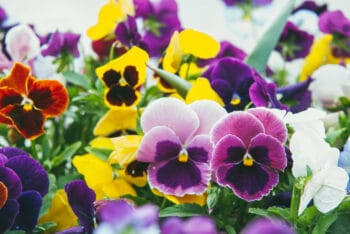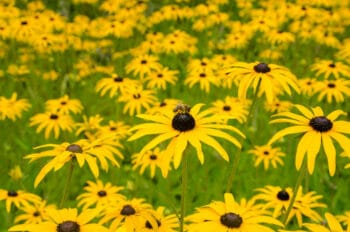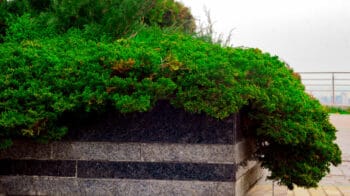What Happens to Plants in Winter
Plants grow very little or not at all during the winter. You may even think your plants are dead. Some of them are.
During the winter plants do 1 of 3 things. They die. They go into dormancy. They stay active.
Keep reading to learn a little about all 3 things.

Plants that die
Annual plants die in winter. They live for one growing season. You must replant them every year.
Popular winter annuals include pansies, dianthuses, petunias, calendula, and flowering kale.
Dormancy

Perennial plants, on the other hand, go dormant during the winter.
Dormancy is when a plant’s life cycle is temporarily stopped. The plant is able to live off of the extra energy that it has stored up.
Photosynthesis is still taking place but at a much slower pace.
Some beloved perennials that do well in North Texas are birds of paradise, Mexican sage bush, black-eyed Susan, coneflowers, and coral bells.

Active Plants
Evergreen trees and shrubs stay active in winter.
An evergreen is a plant that stays green and grows actively for more than one growing season.
Their needles are wax-coated. This helps keep water in. These plants are dark-colored, which absorbs more sunlight.
Because evergreens are active in winter, they do need water. Winter weather such as cold temperatures mixed with warm winds causes evergreens to not be able to get as much water as they need.
Here is a list of some sought-after evergreens; hemlock, live oak, spruce, holly, and juniper.
Winter Water Loss
Many people assume that water loss is not a concern during winter. Plants do experience water loss during the winter.
Winter soil becomes dry, cold, and sometimes frozen. This makes it difficult for water to pass through the plant and reach its roots.
Young Plants
Young plants will often die during winter, even perennials. Their fragile and underdeveloped root system just cannot adapt to the cold weather.
Older, mature plants with a strong root system will be able to survive the winter.
Frozen Plants
When a hard frost hits, the water inside the plant will freeze. This is very damaging and traumatic for the plant.
While the water is frozen, water cannot freely pass through, which causes the plant to become dehydrated.
The damage occurs when the plant begins to thaw out. As the plant thaws, the water cracks and destructs the plant’s cells, stems, and leaves.
If your plant only has cold-burnt leaf tips and discoloration, you can probably save it. When the damage extends down to the roots, it is very difficult to make a comeback.
Wait until spring to cut out any damaged parts of the plant.
Except for succulents. Do not remove damaged parts from your succulents. Watch over them for a few weeks. If the leaves come out easily and are a bit mushy; the plant will not recover. If you see any signs of new growth, the succulent should be ok.
Final Thoughts
It’s quite incredible really, that plants have this ability to hibernate through the winter and then flourish again in the spring.
When they lose their leaves and colors, it’s as if they’re putting on their pj’s and getting ready for a big rest.
Take extra care of your plants this winter and you will be overjoyed when spring arrives and all the colors start popping.
